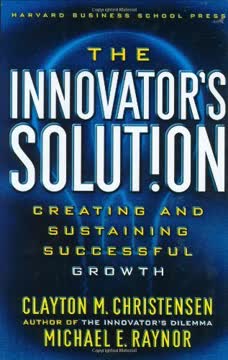Key Takeaways
1. Disruptive innovations create new markets and reshape industries
Disruptive innovations introduce a new value proposition. They either create new markets or reshape existing markets.
New value proposition. Disruptive innovations offer a different package of attributes that may initially appeal only to a small segment. They are often simpler, more convenient, or less expensive than existing products. Two main types:
-
New-market disruptions: Create entirely new markets by making it easier for people to do something that previously required deep expertise or great wealth. Examples:
- Kodak camera
- Personal computers
- eBay online marketplace
-
Low-end disruptions: Target overserved customers at the low end of an existing market with a "good enough" product at a lower price. Examples:
- Walmart discount stores
- Vanguard index funds
- Steel minimills
Industry reshaping. As disruptive innovations improve, they often take over mainstream markets, forcing incumbents to retreat upmarket or go out of business. This process drives industry change and creates new growth opportunities.
2. Asymmetries of motivation and skill drive disruption
Disruptive attackers to enter a market, grow without incumbent interference, and mitigate the incumbent's response when it is finally motivated to counterattack.
Asymmetric motivation. Disruptors target markets that are unattractive to incumbents, allowing them to grow without interference. Key factors:
- Small market size relative to incumbent needs
- Less profitable customers
- Business model incompatible with incumbent values
Asymmetric skills. Disruptors develop unique capabilities suited to their new market context. As they improve, these skills become competitive advantages:
- Ability to profit from lower prices
- Processes optimized for speed and flexibility
- Values aligned with serving new customer segments
Incumbent blindness. Large companies often dismiss disruptive threats because:
- Small markets don't solve their growth needs
- Their values prioritize serving existing customers
- They lack the right processes to compete in new contexts
3. Incumbents often fail to respond effectively to disruptive threats
The company should not give the separate organization too much financing, because the key to success is the creation of a business model whose cost structure enables profits to be earned at low price points.
Reasons for failure:
- Resource dependence: Existing customers control resource allocation
- Processes designed for the old business model
- Values that prioritize high-margin opportunities
Ineffective responses:
- Cramming: Forcing a disruptive innovation to fit the existing business model
- Spinoffs without autonomy: Creating separate units but constraining them
- Delayed action: Waiting until the threat is obvious, but too late
Keys to effective response:
- Separate organization with autonomy to develop new processes and values
- Patient for growth but impatient for profitability
- Leadership with relevant experience in the new market context
4. Overshooting customer needs creates opportunities for disruption
Companies innovate faster than customers' lives change.
Overshooting defined. Products improve faster than customer needs evolve, eventually exceeding what many customers can use or are willing to pay for.
Signs of overshooting:
- Decreasing premiums for product improvements
- Customers not using all product features
- Complaints about complexity or high prices
- Growth of "good enough" alternatives
Opportunities created:
- Low-end disruption: Serving over-served customers with simpler, cheaper products
- New-market disruption: Bringing high-end functionality to new contexts
- Modular solutions: Specialization in parts of the value chain
- Convenience and customization become new competitive priorities
Examples:
- Personal computers disrupting minicomputers
- Discount retailers disrupting department stores
- Index funds disrupting actively managed mutual funds
5. Emergent strategy and the right preparation regimen are crucial for disruptors
The level of one's insight is not strictly a function of the level of one's access to unique or proprietary information.
Emergent strategy. In uncertain new markets, companies must:
- Start small and adapt based on market feedback
- Be flexible in business model and target market
- Learn through experimentation rather than detailed planning
Preparation regimen components:
-
Strategy-making process:
- Encourage bottom-up ideas
- Test assumptions quickly and cheaply
- Adapt based on real-world data
-
Hiring decisions:
- Look for relevant "schools of experience"
- Value problem-solving skills over industry expertise
- Seek leaders comfortable with uncertainty
-
Funding sources:
- Patient for growth, impatient for profitability
- Aligned with emergent strategy approach
- Willing to fund learning and experimentation
6. Value networks and business models influence disruptive potential
Overlapping value networks with choke points can limit the ability to create asymmetries.
Value network defined. The context within which a firm identifies and responds to customers' needs, solves problems, procures inputs, reacts to competitors, and strives for profit.
Importance for disruption:
- Separate value networks shield disruptors from incumbent response
- Overlapping networks increase the risk of co-option or imitation
- Business models must fit the new value network to be sustainable
Key considerations:
- Suppliers: Can you source inputs compatible with a disruptive model?
- Channels: Are there ways to reach customers that incumbents don't control?
- Complementary innovations: What other changes enable your disruption?
- Profit model: Can you make money in ways incumbents find unattractive?
Examples:
- Southwest Airlines' point-to-point model vs. hub-and-spoke networks
- Dell's direct-to-consumer model vs. traditional retail channels
- Netflix's subscription model vs. pay-per-rental
7. Nonmarket forces shape the landscape for innovation
Motivation, defined as market incentives to innovate; and ability, defined as the capability to obtain resources, craft them into products and services, and offer those products and services to customers.
Nonmarket forces. Factors outside of direct market competition that influence innovation:
- Government regulation
- Industry standards
- Intellectual property regimes
- Cultural norms
Motivation/Ability framework:
- Motivation: Incentives to innovate (market size, profit potential)
- Ability: Capability to bring innovations to market
Four scenarios:
- Hotbed: High motivation + high ability = innovation flourishes
- Looking for a target: High motivation + low ability = focus on removing barriers
- Looking for money: Low motivation + high ability = create incentives
- Dilemma: Low motivation + low ability = major intervention needed
Policy implications:
- Identify barriers to motivation or ability
- Target interventions to address root causes
- Avoid actions that create unintended consequences
- Encourage disruption in heavily regulated industries
8. Disruption follows predictable patterns across diverse industries
Good theory provides a robust way to understand important developments, even when data is limited.
Common patterns:
- Initial foothold in new or low-end markets
- Improvement along a different trajectory than incumbents
- Eventual movement upmarket as performance improves
- Incumbent retreat to highest tiers or exit
Industry examples analyzed:
- Education: Online learning, corporate universities
- Aviation: Regional jets, discount airlines
- Semiconductors: Customized chips, foundry model
- Healthcare: Retail clinics, home diagnostics
- Telecommunications: VoIP, wireless data
Key insights:
- Disruption is relative: The same innovation can be sustaining to one firm and disruptive to another
- Context matters: Industry structure influences how disruption unfolds
- Nonconsuming contexts are powerful launch points
- Overshooting creates openings in established markets
9. Incumbent responses: co-option, spinouts, or building a disruptive engine
The spinout organization's processes and values must be allowed to coalesce around a business model that can make money at low price points.
Co-option. Integrating the disruptive innovation into the main business:
- Often fails due to conflicts with existing processes and values
- Can work if the innovation is sustaining to the incumbent
Spinouts. Creating separate organizations to pursue disruptive opportunities:
- Must have true autonomy to develop new processes and values
- Need appropriate funding and performance metrics
- Can be acquired later if successful
Building a disruptive engine. Developing internal capabilities to repeatedly create disruptions:
- Requires senior leadership commitment
- Separate processes for disruptive and sustaining innovations
- Cultivation of emergent strategy skills
Key success factors:
- Recognition of disruptive threats early
- Willingness to cannibalize existing business
- Patience to allow new ventures to find footing
- Appropriate resource allocation to both sustaining and disruptive efforts
10. The "jobs to be done" framework reveals untapped opportunities
Products are successful when they connect with a circumstance.
Jobs-to-be-done concept. Customers "hire" products to help them accomplish specific tasks or make progress in particular circumstances.
Benefits of the framework:
- Reveals non-obvious competition
- Identifies overshot and undershot jobs
- Suggests new market opportunities
- Guides product development priorities
Applying jobs-to-be-done:
- Identify the circumstance: When and where does the job arise?
- Define the job: What progress is the customer trying to make?
- Uncover pain points: What makes the job difficult or unsatisfactory?
- Analyze current solutions: How do customers currently get the job done?
- Innovate: How can you help customers do the job better?
Examples:
- Milkshakes "hired" for commute entertainment and appetite control
- Minute Clinic hired to quickly treat simple health issues
- eBay hired to turn unwanted items into cash
11. Leaping to the bottom of the market pyramid enables massive growth
The lower in the pyramid you start, the greater the up-market potential.
Market pyramid concept. Dividing potential customers by income/wealth:
- Top: High-income, demanding customers
- Middle: Average consumers in developed markets
- Bottom: Low-income consumers, often in developing countries
Benefits of targeting the bottom:
- Massive untapped markets (billions of potential customers)
- Less competition from established players
- Opportunity to move upmarket over time
- Potential for disruptive business models
Strategies for success:
- Identify jobs-to-be-done for non-consumers
- Develop simple, affordable solutions
- Build business models profitable at low price points
- Leverage local knowledge and distribution
- Be patient for growth, allowing the market to develop
Examples:
- Tata Nano ultra-low-cost car
- Grameen Bank microfinance
- Aravind Eye Care System's low-cost surgeries
Last updated:
FAQ
What's Seeing What's Next about?
- Focus on Innovation Theories: The book by Clayton M. Christensen explores how theories of innovation can be used to predict industry changes, with a particular emphasis on disruptive innovations.
- Analyzing Market Dynamics: It provides a structured approach to understanding how companies can identify opportunities and threats within their industries.
- Real-World Applications: The authors apply these theories to various industries, such as education, aviation, and telecommunications, to illustrate their practical implications.
Why should I read Seeing What's Next?
- Strategic Insights: The book offers valuable insights for executives, strategists, and investors on navigating and anticipating industry changes.
- Framework for Analysis: It provides a framework for analyzing competitive battles and strategic choices, making it a practical guide for decision-making.
- Understanding Disruption: Readers will gain a deeper understanding of disruptive innovation and how it can reshape industries, crucial in today’s fast-paced business environment.
What are the key takeaways of Seeing What's Next?
- Importance of Theory: Good management theory is essential for predicting future changes, as data is often only available about the past.
- Signals of Change: Identifies three customer groups—nonconsumers, undershot customers, and overshot customers—that can indicate opportunities for innovation.
- Asymmetries in Competition: Discusses how asymmetries in motivation and skills between incumbents and entrants can determine the outcomes of competitive battles.
What is disruptive innovation according to Seeing What's Next?
- Definition of Disruption: Disruptive innovation refers to innovations that create new markets or reshape existing ones by offering simpler, more affordable solutions.
- Types of Disruptive Innovations: Categorizes disruptive innovations into low-end and new-market disruptions, targeting different customer segments.
- Incumbent Challenges: Established companies often struggle to respond to disruptive innovations because their resources, processes, and values are aligned with sustaining innovations.
How do the authors define nonconsumers in the context of education?
- Definition of Nonconsumers: Nonconsumers are individuals who lack the ability, wealth, or access to conveniently accomplish an important job for themselves, often hiring someone else to do it.
- Examples in Education: In education, nonconsumers include adult learners who cannot attend traditional institutions due to time or financial constraints.
- Opportunity for Disruption: Reaching nonconsumers through innovative educational models can create significant growth opportunities.
What is the motivation/ability framework introduced in Seeing What's Next?
- Framework Overview: The motivation/ability framework assesses the factors that influence innovation, focusing on the motivation to innovate and the ability to execute.
- Four Quadrants: It categorizes industry situations into four quadrants: hotbed (high motivation and ability), looking for a target (ability constraints), looking for the money (motivation constraints), and the dilemma (lack of both).
- Government's Role: Highlights how government actions can impact motivation and ability, either promoting or stifling innovation.
How do asymmetries of motivation and skills affect competitive battles?
- Asymmetric Motivation: Disruptive entrants often target markets that incumbents overlook, allowing them to grow without immediate competition.
- Asymmetric Skills: Entrants develop unique skills that incumbents may lack, giving them a competitive edge when the market dynamics shift.
- Outcome Predictions: Understanding these asymmetries helps predict the likely outcomes of competitive battles between incumbents and new entrants.
What strategies can incumbents use to respond to disruptive threats?
- Spinout Organizations: Incumbents can create separate business units to explore disruptive innovations without the constraints of their existing processes and values.
- Developing Internal Capabilities: They can build internal processes that allow them to manage disruptive innovations effectively over time.
- Co-option Strategies: Incumbents may attempt to co-opt disruptive innovations by integrating them into their existing business models, although this can be challenging if the innovation requires different skills.
How does Seeing What's Next address the health care industry?
- Disruptive Innovations in Health Care: Innovations like home pregnancy tests and blood glucose monitoring kits have transformed health care delivery by enabling less-skilled providers to offer effective care in more convenient settings.
- Focus on Nonconsumption: Emphasizes the importance of targeting nonconsumers and overshot customers in health care, suggesting significant growth by addressing these groups.
- Role of Scientific Advancements: Highlights how scientific progress fuels disruptive innovations in health care, allowing for better categorization of diseases and the development of rules that enable less-skilled providers to deliver care.
What role do cable companies play in the telecommunications industry according to Seeing What's Next?
- Emerging Competitors: Cable companies have entered the telecommunications market by offering voice services, leveraging their existing infrastructure to provide competitive alternatives to traditional phone services.
- Sustaining vs. Disruptive Strategies: Argues that cable companies are primarily following sustaining strategies, which may lead to intense competition with incumbents but do not necessarily create disruptive growth opportunities.
- Potential for Co-option: Incumbents are likely to co-opt cable companies' offerings, as they have the resources and motivation to respond effectively to new entrants in the market.
How does the book explain the significance of VoIP technology?
- VoIP as a Disruptive Force: VoIP technology represents a significant shift in telecommunications, allowing voice calls to be transmitted over data networks, creating opportunities for new entrants.
- Incumbent Response: Suggests that while incumbents have the motivation and skills to co-opt VoIP technologies, they may struggle to adapt to the new business models that emerge from this disruption.
- Future Growth Potential: VoIP could lead to new market opportunities for both incumbents and entrants, particularly as technology continues to improve and integrate with other services.
What are the best quotes from Seeing What's Next and what do they mean?
- "Disruption is a process, not an event.": Emphasizes that disruption is an ongoing journey that companies must navigate, rather than a singular occurrence, highlighting the need for agility.
- "Disruptive innovations are not limited to high-tech markets.": Underscores that disruption can occur in any industry, encouraging readers to look for opportunities in various sectors where traditional models may be challenged.
- "The wheel of disruption is a core microeconomic engine of macroeconomic growth.": Illustrates how the cycle of disruption drives economic growth by fostering innovation and creating new markets, crucial for long-term success.
Review Summary
Seeing What's Next receives mostly positive reviews for its insights on disruptive innovation and predicting industry changes. Readers appreciate the practical applications of innovation theories and case studies across various industries. Some find it dense and outdated, while others value its timeless concepts. The book is praised for its analytical tools and frameworks to evaluate market disruptions. Critics note the lack of quantitative structure and excessive focus on telecommunications. Overall, it's considered a valuable resource for business leaders, investors, and strategists interested in innovation management.
Similar Books
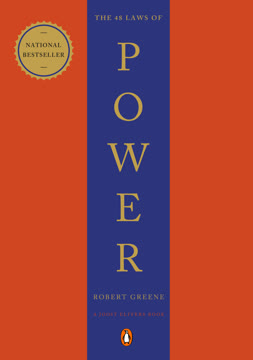
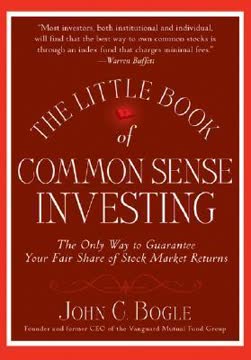



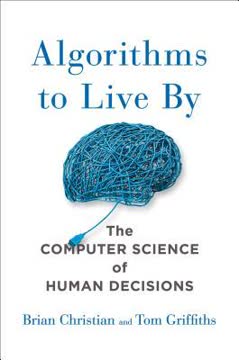
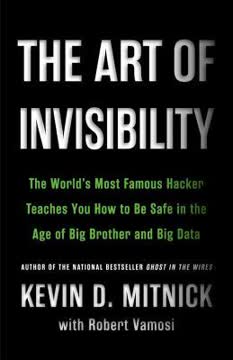


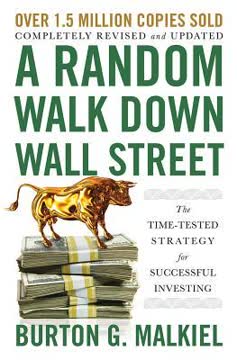
Download PDF
Download EPUB
.epub digital book format is ideal for reading ebooks on phones, tablets, and e-readers.



